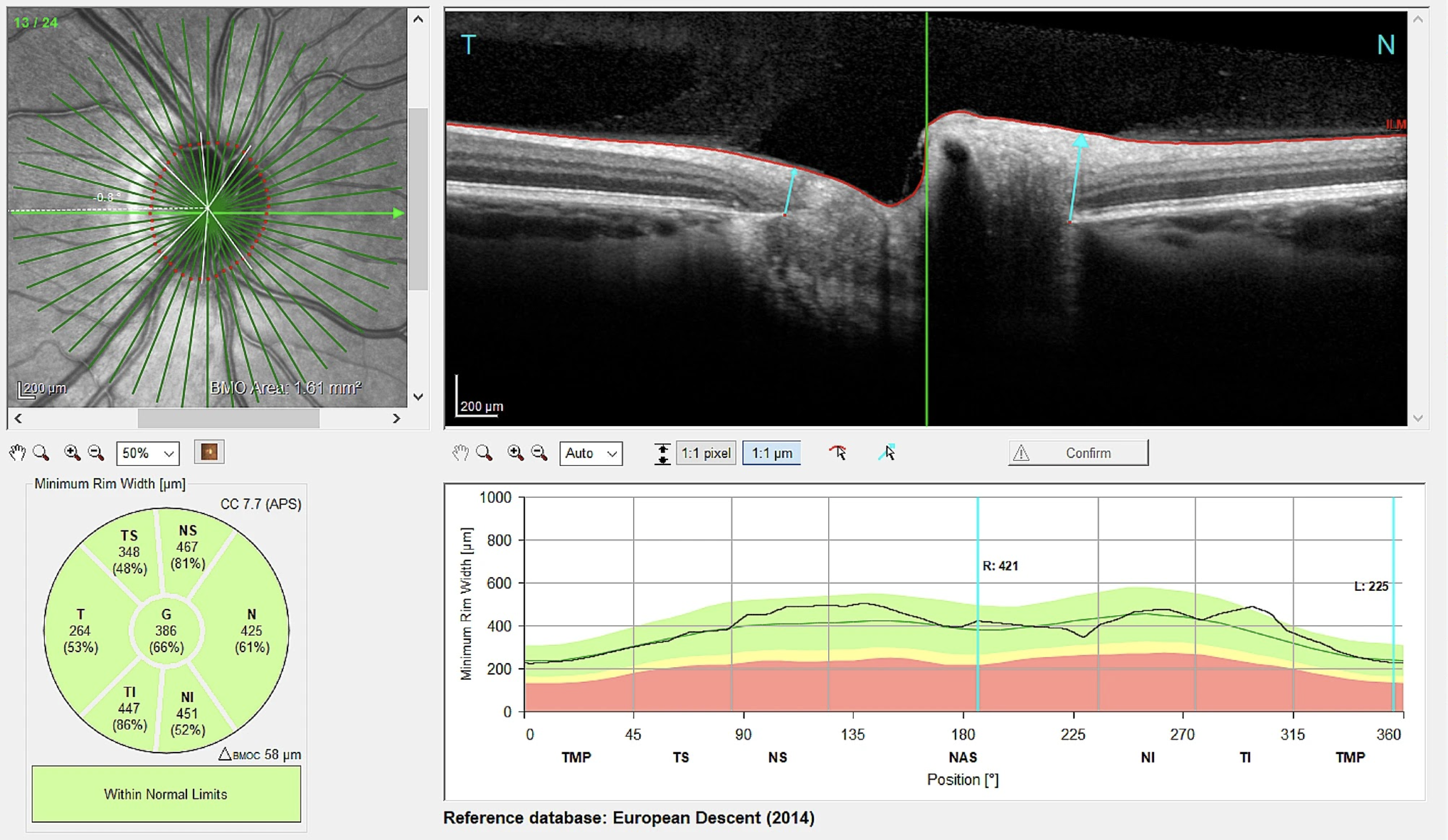 |
|
Repeated intravitreal injections due to choroidal neovascularization seem to have a deleterious effect on MRW but not on RNFL. Photo: Boltz A, et al. BMC Ophthalmol. 2024;24:185. Click image to enlarge. |
Intravitreal injections are now a mainstay of retinal specialty care for many conditions, and the procedure is generally deemed to be safe. However, injecting fluid into the eye does affect the organ’s pressure gradients and repeat exposure to such forces can increase risks of pressure-mediated damage, as in glaucoma. As a result, clinicians engaged in comanagement of such patients must be vigilant for any potentially concerning changes in anatomical status.
OCT has made it possible to detect early structural changes due to many ocular conditions and at the same time deliver objective parameters, in contrast to perimetry. In addition to a thinning of peripapillary retinal nerve fiber layer (RNFL) thickness, Bruch’s membrane opening minimum rim width (MRW) has been established more recently for the assessment of optic discs. A study conducted in Vienna explored the hypothesis of whether repeated anti-VEGF injections are associated with reduced RNFL and MRW of the optic nerve head. The researchers determined that MRW was a more sensitive marker than RNFL for evaluating the effect of frequent intravitreal injections on the optic nerve head since it seems to be the first structure affected.
The researchers analyzed 66 patients with a history of intravitreal injections due to wet AMD. The mean age was 83.4, and an average of 12.58 prior injections was included.
Mean global RNFL was 90.62μm and both RNFL as well as MRW significantly decreased with advanced age. RNFL of the nasal-superior, temporal-superior, temporal-inferior sectors highly significantly correlated with age, but this did not hold true for the nasal, the temporal and the nasal-inferior sector. Advanced age was also significantly associated with lower global MRW, nasal-superior, temporal-superior, temporal and temporal-inferior MRW but not with nasal and nasal-inferior MRW.
Correlating with the number of injections, no significant impact on RNFL was found globally or in any of the sectors. In contrast, however, global MRW was significantly reduced with increasing numbers of intravitreal injections. Looking at the MRW sectors individually, the temporal and the temporal-inferior sector also significantly correlated with the number of injections, whereas the other sectors did not.
The researchers noted in their paper that one limitation of their study was the lack of axial eye length measurements, which may influence MRW analysis. They tried to minimize this by excluding patients with high myopia.
“Further longitudinal studies are warranted to widen our understanding of the potential role of anti-VEGF injections in the pathogenesis of glaucoma,” they concluded.
Boltz A, Spöttl T, Huf W, et al. Effect of intravitreal injections due to neovascular age-related macular degeneration on retinal nerve fiber layer thickness and minimum rim width: a cross sectional study. BMC Ophthalmol. 2024;24:185. |


